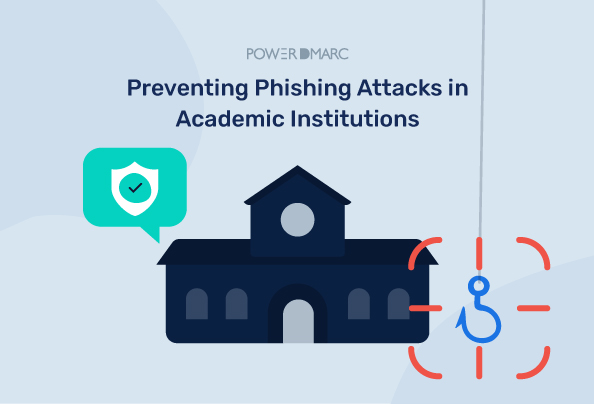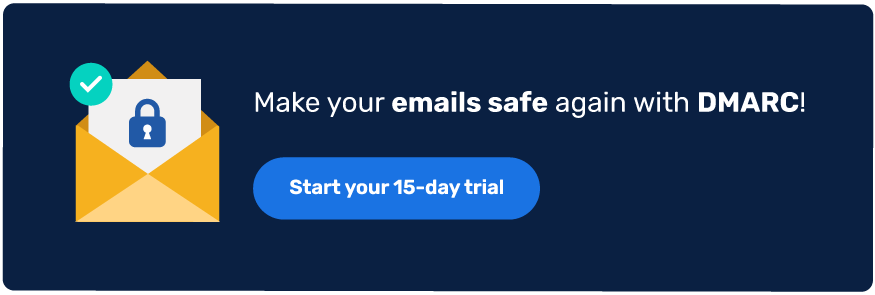
2023-10-31 18:29:22 Author: securityboulevard.com(查看原文) 阅读量:3 收藏

With technology deeply embedded in our lives, academic institutions now rely heavily on digital communication. However, this increased digital use comes with vulnerabilities, notably email phishing attacks as a result of domain name impersonation. These social engineering attacks target human behavior and are sometimes pretty hard to detect and prevent. Given their vast user networks and open access, educational institutions are especially at risk. This article explores these threats and offers protective strategies.
Understanding the Threat: Phishing Attacks on Academic Domains
Phishing attacks in an academic setting often come disguised as legitimate communications. It could be an email mimicking the IT department, a fake tuition payment portal, or even fraudulent scholarship announcements. As students, staff, and faculty interact with communications, they might unknowingly provide sensitive information, including login credentials, financial details, and personal data.
It is a popular assignment among teachers that they ask students to write about the threats and prevention. But what can be done if there is no idea what to write about? Luckily, you can use an example of expository essay at StudyMoose. So, you prepare your piece with a strong standpoint and learn something new thanks to free examples. It is a proven method to improve academic performance and enhance writing skills, as well as become technologically aware of impending threats.
The Consequences of Successful Phishing Attacks
When a phishing attack successfully penetrates an academic institution, the repercussions may be profound and multifaceted. At an individual level, compromising personal information belonging to students and staff leads to distressing scenarios such as identity theft. Stolen identities can be used illicitly, from fraudulently obtaining loans to committing crimes in the victim’s name.
Financial ramifications are another critical concern. Upon gaining unauthorized access to financial details, cybercriminals initiate unauthorized transactions, siphoning off tuition fees, misdirecting funds, or even committing large-scale financial fraud that drains an institution’s resources. Such breaches have immediate fiscal implications and erode trust, potentially leading to a decline in enrollments or donations.
Beyond personal and financial threats, the academic credibility of an institution is at stake. Universities and colleges are often hubs of groundbreaking research, housing sensitive data that, if stolen, can be sold, manipulated, or prematurely released. The loss of such data undermines years of research and results in significant setbacks for projects, scholars, and the global academic community.
Furthermore, there’s the reputational damage to consider. News of a successful phishing attack tarnished the institution’s image, leading to skepticism among prospective students, parents, and the academic community. Restoring this trust is long, arduous, and often expensive, requiring extensive PR campaigns and assurances of bolstered security measures.
Lastly, the aftermath of a phishing attack often necessitates a comprehensive audit of the institution’s cybersecurity infrastructure. Addressing vulnerabilities, patching systems, and potentially overhauling digital frameworks is resource-intensive, further straining the institution’s financial and human resources.
Phishing Education and Awareness Tips
Combatting the menace of phishing necessitates a well-rounded approach, emphasizing both proactive and reactive measures. Central to this strategy is disseminating knowledge and fostering a culture of vigilance.
Regular Training Sessions
As academic curricula evolve to address contemporary issues, there should be training modules on phishing. Institutions have to mandate regular training sessions covering phishers’ newest tactics. These sessions incorporate real-world examples, highlighting the subtleties and red flags associated with phishing attempts.
Mock Phishing Drills
Simulating attacks is one of the most effective ways to test the community’s resilience to phishing. Controlled exercises provide a hands-on experience, helping individuals identify their weak spots and areas of improvement. Post-drill debriefings further enhance learning by discussing what went right and wrong.
Dissemination of Guidelines
Beyond formal training, academic institutions should distribute easy-to-digest guidelines. Infographics, posters, and digital banners can be strategically placed around campus and on institution websites. Visual aids are constant reminders of best practices, such as double-checking email senders or hovering over links to see their destinations.
Designating Reporting Channels
Encourage a culture where suspicious activities are promptly reported. Set up dedicated channels – a hotline, email, or portal – where potential phishing attempts can be flagged. Swift reporting prevents individual breaches and enables IT teams to take institution-wide protective measures.
Engaging External Experts
Sometimes, an external perspective may shed light on overlooked vulnerabilities. Inviting cybersecurity experts for seminars, workshops, or assessment sessions provides fresh insights into the evolving landscape of phishing. Their expertise informs and elevates institutional policies and practices.
Promoting Peer-to-peer Learning
Encourage students and staff to share their experiences and lessons learned from phishing encounters, whether successfully avoided or, unfortunately, fallen for. This peer-to-peer approach fosters a community of shared responsibility, where everyone plays a role in safeguarding the institution’s digital assets.
To counter phishing’s ever-evolving tactics, academic institutions must instill a continuous learning and adaptive mindset in their community. They hope to deter cyber threats effectively by staying ahead, armed with knowledge and awareness. Thus, always check for indicators of secure communications, such as SSL certifications or verified email addresses.
Academic Phishing Prevention Tips
In the digital age, where cyber threats like phishing are relentlessly evolving, mere awareness is insufficient. Academic institutions must have robust technical defenses, acting as the bulwarks against the menacing attempts. Here’s a deeper dive into the technical tools and strategies that shield institutions:
- Multi-Factor Authentication (MFA): It adds a layer of security by requiring multiple verification methods. Even if a phisher gains access to a password, the second, or third verification method – like a text message or biometric scan – can halt unauthorized access.
- Email Filtering Solutions: Advanced email filters use algorithms and pattern recognition to identify phishing attempts. By examining the origin, content, and patterns of emails, the filters quarantine or outright block suspicious emails, reducing the chance of them reaching an unsuspecting recipient.
- Email Authentication: Protocols like DMARC, SPF and DKIM are effective defenses against phishing attacks that work best when combined. They help verify an email sender’s identity, the genuinity of the message content and establish policies to respond to phishing emails in stringent ways.
- Data Backups: Regularly backing up data ensures institutions restore their data without paying ransom or losing critical information if a successful phishing attack leads to ransomware or data corruption. The backups should be stored in secure, offline environments to ensure they remain untainted.
- Firewalls and Intrusion Detection Systems (IDS): A firewall acts as a gatekeeper, analyzing and controlling incoming and outgoing network traffic based on predetermined security policies. With IDS, which monitors and alerts suspicious activities, these systems provide real-time defense and surveillance against potential threats.
- Security Information and Event Management (SIEM): Such systems provide real-time analysis of security alerts generated by hardware and software. By aggregating log data from different sources, SIEM identifies patterns and potentially halts advanced phishing attacks in their tracks.
- Endpoint Protection Platforms: These tools protect a network when remote devices like smartphones, laptops, or other wireless devices are accessed. They ensure that every device connected to the network meets the required security standards, thereby reducing potential vulnerabilities.
In the ongoing battle against phishing, it’s evident that institutions need a multifaceted technical approach. A combination of preventive measures, real-time defenses, and recovery tools forms the bedrock of a comprehensive anti-phishing strategy. By adopting and regularly updating technical measures, academic institutions significantly diminish the risks associated with phishing attacks.
Conclusion
Phishing attacks on academic institutions are a growing concern. By integrating phishing education and awareness with technical defenses, schools may create a robust shield against those threats. As technology and tactics evolve, so must our strategies to protect the sanctity of our educational institutions. For more comprehensive data on phishing attacks in academic settings, consider getting professional help for valuable insights.

*** This is a Security Bloggers Network syndicated blog from PowerDMARC authored by Ahona Rudra. Read the original post at: https://powerdmarc.com/academic-phishing-prevention-strategies/
如有侵权请联系:admin#unsafe.sh
